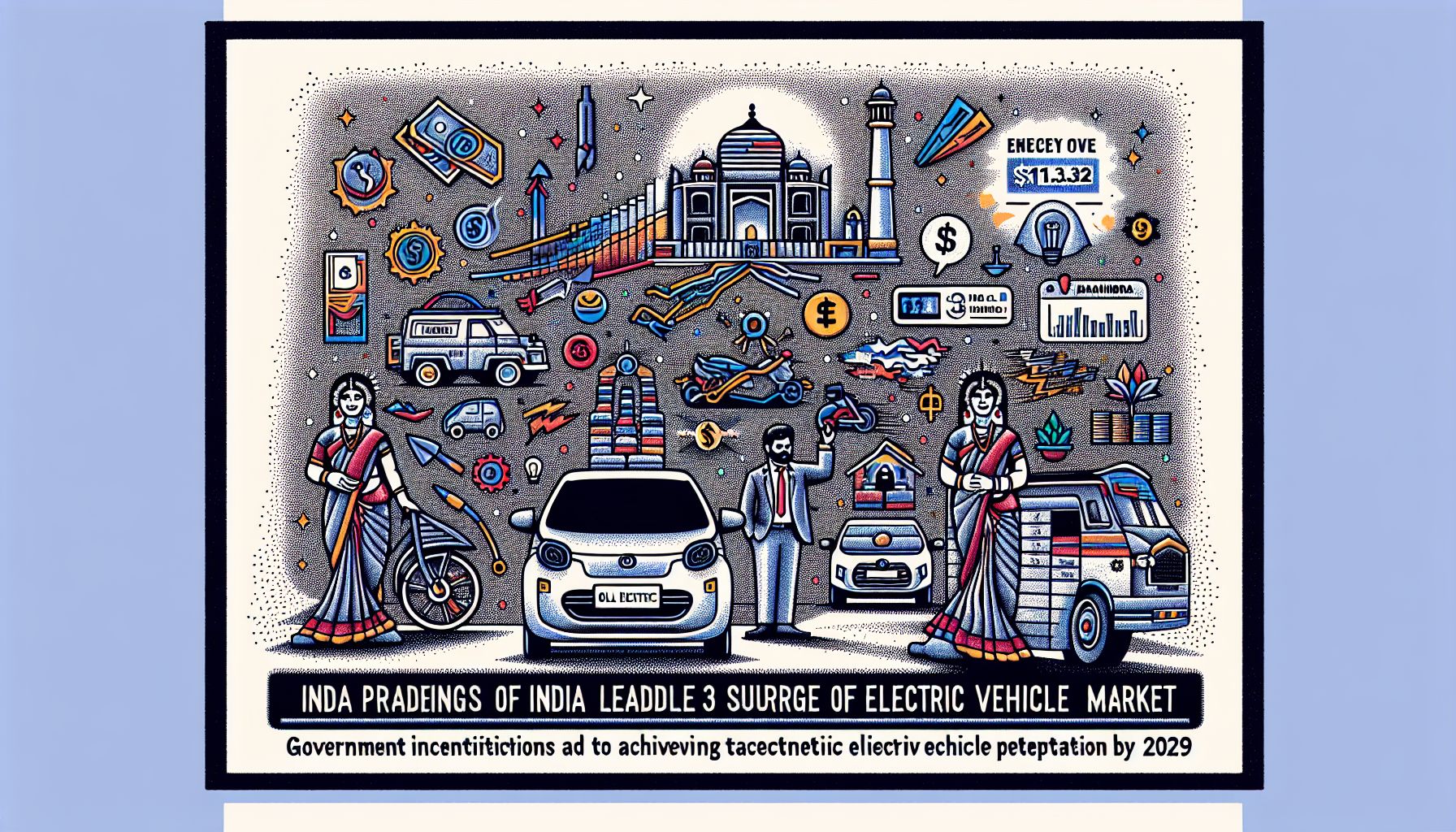India's Electric Vehicle Market Surges: Ola and Mahindra Lead the Charge

Blin, Friday, 15 November 2024.
India’s electric vehicle market is experiencing rapid growth, with sales expected to reach $18.32 billion by 2029. Ola Electric and Mahindra are at the forefront, driving significant advancements in the two-wheeler and three-wheeler segments. Government incentives and policies are boosting adoption, aiming for 30% electric vehicle penetration by 2030.
Accelerating Growth in the Electric Two-Wheeler Market
The electric two-wheeler segment in India has witnessed a remarkable surge, with sales jumping from 681,991 units in 2022 to 925,551 units in 2023[1]. Ola Electric, a key player in this market, has significantly expanded its market share from 18% in 2022 to 31% in 2023, illustrating its aggressive growth strategy[1]. This rapid expansion is attributed to Ola’s innovative product offerings and competitive pricing, which have resonated well with the Indian consumers seeking sustainable and cost-effective transportation solutions.
Mahindra’s Dominance in the Electric Three-Wheeler Sector
In the electric three-wheeler market, Mahindra & Mahindra has solidified its position as a leader, capturing a 29% market share in 2023[1]. The sales of electric three-wheeler cargo vehicles increased dramatically from 14,881 units in 2022 to 26,833 units in 2023, reflecting an 80% growth in the segment[1]. Mahindra’s commitment to expanding its electric vehicle lineup is evident as it aims to sell 1 million electric vehicles by 2027[4]. This strategic push aligns with the broader national goals of increasing electric vehicle adoption to 30% by 2030[4].
Government Policies Fueling the EV Revolution
The Indian government’s approval of the E-Vehicle policy in March 2024 has been a catalyst for the burgeoning electric vehicle market, providing substantial incentives and tax exemptions to both manufacturers and consumers[1]. These policies are designed to reduce the nation’s reliance on fossil fuels and lower pollution levels, supporting India’s vision for a more sustainable transportation future[4]. As a result, the market is projected to grow at a compound annual growth rate (CAGR) of 28.52%, reaching an estimated value of $18.319 billion by 2029[1].
Challenges and Future Prospects
Despite the promising growth, the Indian electric vehicle market faces challenges such as the high cost of lithium-ion batteries, which can constitute a significant portion of the vehicle’s cost[3]. Additionally, the lack of widespread charging infrastructure poses a barrier to mass adoption[3]. However, advancements in battery technology and increased investment in charging networks are expected to mitigate these issues over time. With companies like Ola Electric and Mahindra leading the charge, the future of India’s electric vehicle market appears bright, promising a transformative shift in the country’s transportation landscape by 2030.